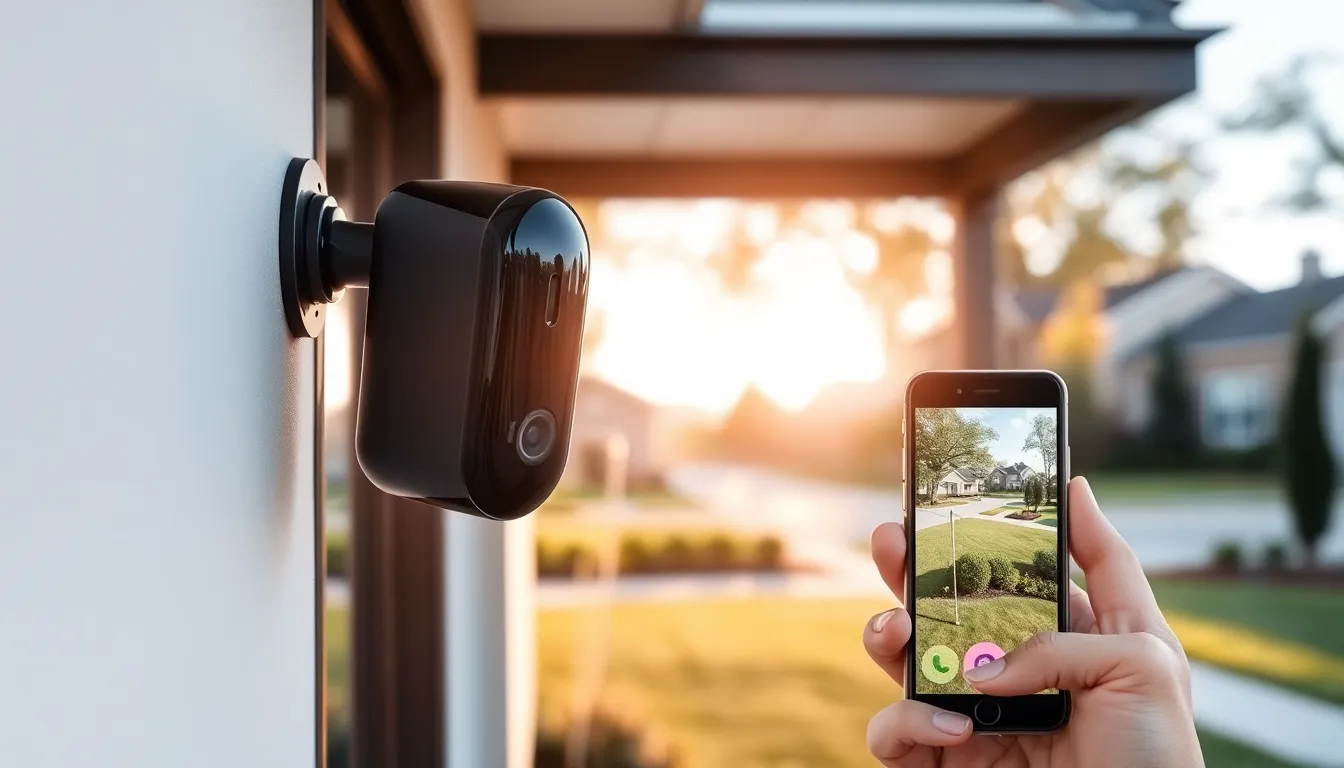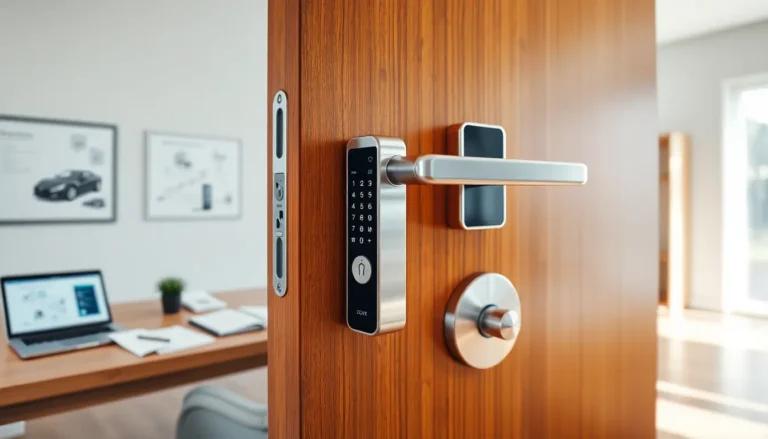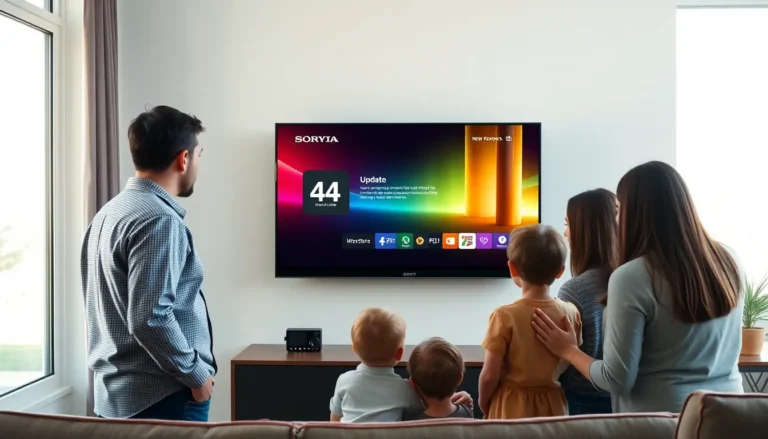Ever tried to keep an eye on your home but were thwarted by a pesky WiFi signal that just won’t cooperate? If so, you’re not alone. Many people are tired of weak connections and constant buffering. Enter the cellular security camera, your ticket to seamless monitoring without the hassle of WiFi. In this guide, we’ll explore everything you need to know about these innovative devices. Get ready to laugh at spotty connections while also feeling confident about safeguarding your space.
Table of Contents
ToggleUnderstanding Cellular Security Cameras

Cellular security cameras are designed to operate independently of traditional WiFi networks. Utilizing a cellular network instead, they allow you to monitor your property without the limitations associated with internet connectivity. Think of them as the rebellious teens of the security camera world, defying expectations and thriving in their own way.
These cameras come equipped with SIM cards that connect to 4G LTE networks, enabling consistent real-time streaming and alerts directly to your smartphone or tablet. No need to worry about power outages or your neighbor’s unreliable internet: these cameras give you peace of mind wherever you are.
How Cellular Security Cameras Work Without WiFi
So, how do cellular security cameras manage to operate without a stable WiFi connection? The secret lies in their usage of cellular data networks, similar to how your smartphone makes calls or sends texts.
- Data Usage: These cameras typically transmit data over a cellular connection rather than relying on a home WiFi network. This means you’re not tethered to a router or dependent on a specific location for functionality.
- Video Streaming: When you activate the camera, it sends video streams directly to your device via cellular signals. This process is seamless and allows for live notifications and alerts.
- Remote Access: With most models, users can access footage anytime, anywhere. Just like sending an emoji to a friend, monitoring your home can be done from the comfort of your sofa (or even while sipping a piña colada on vacation.).
Benefits of Using Cellular Security Cameras
Why should you choose a cellular security camera over its WiFi-dependent cousins? Here are some compelling benefits:
- Reliability: Operate seamlessly without worrying about your WiFi going down. Storms or construction nearby? No problem. These cameras stand strong.
- Flexibility: Perfect for areas without reliable internet access. Whether you’re in a remote cabin or an RV, these cameras fit right into your lifestyle.
- Easy Setup: Many units come ready to use out of the box. Just insert a SIM card, power it up, and voilà. Monitoring confusion is a thing of the past.
- Enhanced Security: Cellular networks provide an additional layer of security. Hackers often target home WiFi networks, but your cellular data is much more difficult to intercept.
Limitations of Cellular Security Cameras
While cellular security cameras shine in many areas, they’re not without their drawbacks. Here are some limitations worth considering:
- Subscription Costs: Many cellular cameras require a monthly subscription to access video storage and features. So, you may need a budget that accommodates these recurring expenses.
- Data Consumption: Streaming video can consume significant amounts of data, especially if you’re viewing high-resolution feeds frequently. Monitoring your usage is essential to avoid data overrages.
- Limited Features: Not all cellular cameras come equipped with advanced features found in traditional WiFi models. Some smart integrations might be absent, which can affect the overall user experience.
Choosing the Right Cellular Security Camera
Selecting the perfect cellular security camera can feel overwhelming given the variety of options available. Here are key factors to consider:
- Image Quality: Look for a model that offers high-definition video to capture clear images. Remember, grainy footage is less effective during an emergency.
- Battery Life: For outdoor cameras, find those with long-lasting batteries or those that can recharge via solar power. No one wants to deal with constant battery replacements.
- Storage Options: Determine if you prefer cloud storage or local storage through an SD card. Each option has its pros and cons, so choose what aligns with your needs.
- User Reviews: Check online reviews to hear what real users say about their experiences. It’s almost like reading the menu before ordering, insightful feedback can save you a bad meal.
Top Cellular Security Cameras on the Market
Here are some of the standout cellular security cameras currently available:
- Reolink Go: Known for its impressive image quality and long-lasting battery, the Reolink Go also boasts a solar panel option for extended outdoors use.
- Verizon Home Device Advisor: This sleek model is highly rated for its user-friendly interface and an array of smart features, making it perfect for tech-savvy users.
- Ring Stick Up Cam Cellular: A favorite among homeowners, it provides wide-angle views and integrates seamlessly with other Ring products.
- Alfred Camera: Good for budget-conscious shoppers, this app-based camera still delivers solid performance without very costly.
Installation and Maintenance Tips
Once you’ve chosen your ideal cellular security camera, it’s time to set it up. Here are some handy tips for installation and maintenance:
- Positioning: Aim to install your camera where it’ll capture the most important areas, such as entry points or driveways. Avoid spots obscured by trees or walls to ensure a clear view.
- Keep it Clean: Regularly wipe the camera lenses to keep them free from dust, rain, and spiderwebs. A dirty lens can obstruct clear footage and defeat the purpose of your investment.
- Firmware Updates: Periodically check for firmware updates from the manufacturer. These updates often provide enhanced performance or fix bugs, keeping your camera operating smoothly.
- Test Regularly: Don’t forget to test your camera from time to time. Run through the settings, check connectivity, and make sure notifications are functioning.



